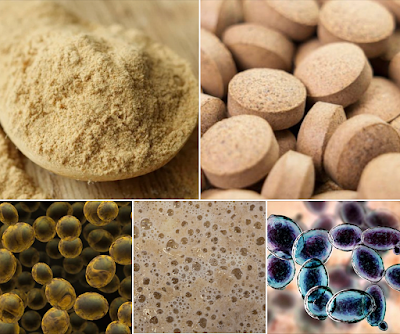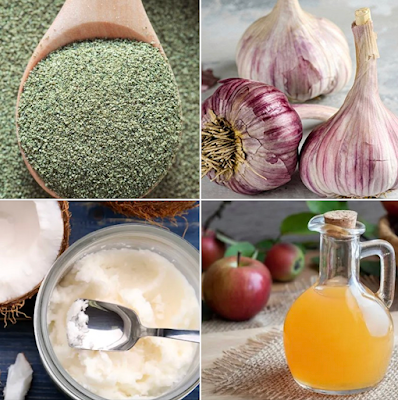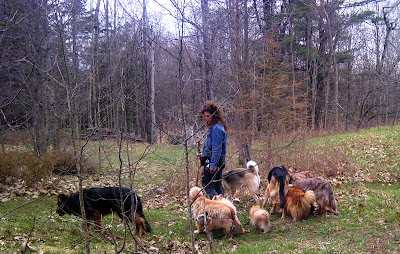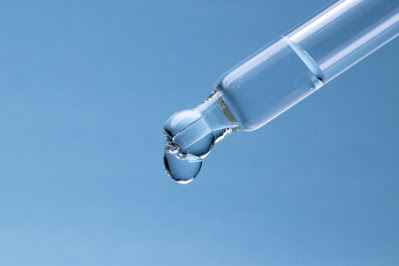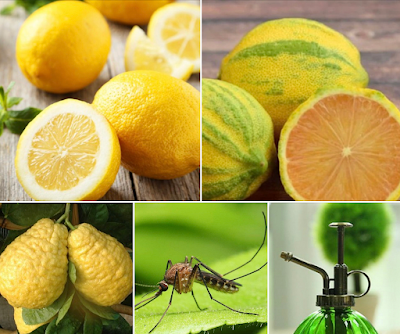Why I Don’t Recommend Brewer’s Yeast for Dogs and Cats
★ 6 min read
In this article:1.0 Why I Don’t Recommend Brewer’s Yeast For Dogs and Cats
- Why I Don't Recommend Brewer's Yeast for Dogs and Cats
- What is Brewer's Yeast?
- A Waste Product From Brewing Beer
- Brewer's Yeast Grown Specifically for the Food Industry
- Naturally Occurring S. Cerevisiae
- Brewer's Yeast in Food and Supplements
- Pet Food, Treats and Supplements
- FortiFlora
- Beneficial Properties of Brewer's Yeast?
- Health Damaging Properties of Brewer's Yeast
- Glyphosate
- Inorganic Heavy Metals
- Toxic Residues
- MSG
- How About Organic Brewer's Yeast?
- Brewer's Yeast Contributes to the Over-growth of Yeast in the Gut
- Brewer's Yeast is Proven to be Ineffective for Flea Prevention
- Appropriate Natural Alternatives to Brewer's Yeast
- Foods That Help Repel Insects
- Vitamin B Rich Whole Foods
1.0 Why I Don’t Recommend Brewer’s Yeast For Dogs and Cats
The Pet Food Industry and Pet Supplement Industry wants you to believe brewer’s yeast is good for your dog and cat.
The industry promotes brewer’s yeast as a desirable ingredient to repel fleas, aid appetite, support fur and skin health. All good right?
Wrong.
The pet industry fails to divulge the rest of the story.
Brewer’s yeast can cause and contribute to pre-existing health issues.
So why would the pet industry ardently promote the use of brewer’s yeast? Maintenance of high profit margins. Brewer’s yeast is a very low-cost, readily available substance.
2.0 What Is Brewer’s Yeast?
Brewer’s yeast is a type of one-celled fungus.
The scientific name for Brewer's yeast is “Saccharomyces cerevisiae”.
The word Saccharomyces comes from the Greek word for sugar. The fungus species name ‘cerevisiae’ comes from the Latin language and means beer.
Saccharomyces cerevisiae was discovered thousands of years ago.
Mesopotamians made an alcoholic beverage with sugar and water fermented with yeast. This beverage later became known as beer.
Today there are three main sources of Saccharomyces cerevisiae (Brewer’s yeast).
2.1 A Waste Product From Brewing Beer
Brewer’s yeast is still used by breweries to make beer. Breweries cultivate the yeast on hops, malted barley or other grains. Yeast sits in the grain-liquid solution to ferment. After multiple uses, the yeast microbes lose their viability. When no longer useful to ferment beer, inactive yeast (waste-yeast) is replaced with new yeast.
2.2 Brewer's Yeast Grown Specifically for the Food Industry
Brewer’s yeast is also grown on molasses made from GE sugar beets and GE sugar cane. This yeast is grown for human and non-human-animal food. It's also used in the making of 'health' supplements. GE sugar beets and GE sugar cane are contaminated with glyphosate (Round-Up), a known carcinogen.
2.3 Naturally Occurring S. Cerevisiae
Saccharomyces cerevisiae exists in the natural environment. It's also present in human and non-human animals' gastrointestinal tract. S. cerevisiae is naturally present on the skin of humans, and non-human animals including cats and dogs.
3.0 Brewer’s Yeast in Food and Supplements
Breweries sell inactive yeast to the food processing industry to include in food and supplement products for humans, farm animals, zoo animals, and domestic animals. Brewer's yeast, a waste product of alcohol manufacturing, generates money for the brewing food and health industry.
Brewer's yeast is sold for human and animal consumption in various forms including:
- Powder or flakes.
- Tablets.
- As an ingredient in food, treats and supplements.
3.1 Pet Food, Treats and Supplements
Brewer’s yeast is used in a range of made-for-pet products. Products advertised as 'high quality', 'all natural' and 'holistic'. Many veterinary prescription pet food products, treats and supplements contain Brewer's yeast.
For example...
3.2 FortiFlora
Forti Flora is a 'probiotic' supplement made by Purina. Forti Flora is often prescribed by veterinarians.
The second ingredient in Forti Flora is Brewer's yeast. Forti Flora can aggravate active health issues and conditions, and damage long-term health, as discussed further below.
FortiFlora Pro Synbiotic also contains Brewer's yeast.
4.0 Beneficial Properties of (inactive) Brewer’s Yeast?
Beneficial properties of brewer's yeast:
Absolutely none.
Contaminated with toxins.
Yes.
Brewer's yeast is:
- Not a beneficial source of nutrients.
- Not a safe source of vitamin B, minerals or plant protein.
5.0 Health Damaging Properties of (inactive) Brewer’s Yeast
-
Glyphosate, a carcinogen
- Inorganic heavy metals, carcinogens
- Toxic residues
- MSG, inflammation and dementia
- How about organic brewer's yeast?
Brewer's yeast is not a healthful source of minerals, protein, and vitamin B.
5.1 Glyphosate
Most brewer’s yeast is cultivated on conventional grains. Glyphosate (Round-up) is sprayed on conventional grain crops to desiccate (dry-out) the crops prior to harvesting.
Glyphosate is also used on genetically engineered (GE) grains, GE sugar beets, and GE sugar cane. These crops contain high levels of glyphosate residue.
On March 20, 2015 the International Agency for Research on Cancer (IARC) released its findings on glyphosate. IARC’s conclusion was... there is “sufficient evidence of carcinogenicity".
5.2 Inorganic Heavy Metals
Conventional crops are cultivated with synthetic chemical fertilizers that contain inorganic, toxic heavy metals.
Heavy metals are drawn into the plants via the root system and remain in the plant after harvesting. Inorganic heavy metals are cancer-causing.
5.3 Toxic Residues
Glyphosate, heavy metals and other toxins used to grow grain crops, yield crops deficient in nutritive value. The crops are also toxin-contaminated.
Vitamins and minerals yielded from these crops are of poor quality. Brewers' Yeast is cultivated on these crops. The resulting yeast provides poor quality nutritive value contaminated with toxic residue.
5.4 MSG
Glutamic acid (MSG) has an inflammatory effect on the brain. Inflammation contributes to onset of cognitive issues such as dementia.
MSG is known as the 'silent killer'.
5.5 How About Organic Brewer's Yeast?
Organic brewer's yeast is not an appropriate dietary or supplemental component for your dog or cat.
Organic brewer's yeast is a source of free glutamic acid (MSG).
6.0 Brewer’s Yeast Contributes to Overgrowth of Yeast in the Gut
Brewer's yeast can exacerbate candida (yeast) overgrowth. Dogs and cats prone to, or experiencing yeast overgrowth should not consume Brewer's yeast.
The pet food and supplement industry does NOT want you to know Brewer’s yeast IS an inflammation-promoting substance.
7.0 Brewer's Yeast is Proven to Be Ineffective for Flea Prevention
Inactive Brewer's yeast; this is the type of Brewer's yeast used by the food industry has been proven ineffective as a flea repellent for dogs and cats.
Have you Heard People Say "Brewer's Yeast Works"?
You may hear people say, “since I put my dog on Brewer’s yeast his skin and fur is so much better”. Or “my dog isn’t getting so many fleas since I put her on brewer’s yeast”.
A dog may experience an improvement in one set of symptoms. But the dog or cat is also exposed to an increased toxic load, and increased risk of inflammatory issues and conditions.
The Pet Industry profits while your cat and dog pay the ultimate price. Degradation of long-term health. An unfair and unnecessary outcome when there are so many safe, affordable, alternatives.
8.0 Appropriate Natural Alternatives to Brewer’s Yeast
- Foods and Herbs that Help Repel Insects
- Vitamin B Rich Foods
There are many supplemental foods that can help your dog and cat be less-attractive to fleas.
Appropriate natural alternatives are inexpensive, readily available, and don’t have adverse side effects.
Appropriate supplemental foods and herbs support health and make your companion animal less attractive to insects and parasites.
For a list of:
- Appropriate foods and herbs.
- Instructions on how to include these items in your dog and cat's diet.
Go to this article.
8.2 Vitamin B Rich Whole Foods for Dogs and Cats
Dog and cat appropriate vitamin B rich foods for your dog and cat include the items on the list below. For information about these foods and how to include each in your dog or cat's diet, click on each item in the list below.
For Dogs and Cats:
For Dogs only:
Holistic Diet, Nutrition, Wellness Services Tailored to Your Individual Dog and Cat
For information about my holistic diet, nutrition and wellness services, visit my holistic wellness services page.
Maintain good health | Address acute and chronic health issues | Pre and post surgery support and recovery
My holistic wellness services are available worldwide via video consultation.
🌎 USA | Canada | UK | Europe | Australia | New Zealand | Asia | South and Central America | Africa | UAE
📱FaceTime | Facebook | Skype | WhatsApp
To set-up your holistic wellness consultation get in-touch via email, go to my contact me page.
Holistic Behavioral Services for Your Dog
For information about my holistic behavioral services, visit my holistic behavioral services page.
For dogs of all ages, sizes and breeds.
My behavioral services are available worldwide via video consultation.
🌎 USA | Canada | UK | Europe | Australia | New Zealand | Asia | South and Central America | Africa | UAE
📱FaceTime | Facebook | Skype | WhatsApp
To set-up your holistic behavioral session get in-touch via email, go to my contact me page.
Affiliations to Companies
✓ None.
✓ I don't sell food, supplements, or other products.
✓ I'm not aligned with any companies.
Article by Karen Rosenfeld.
